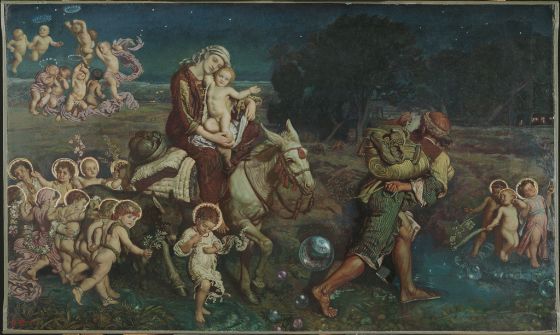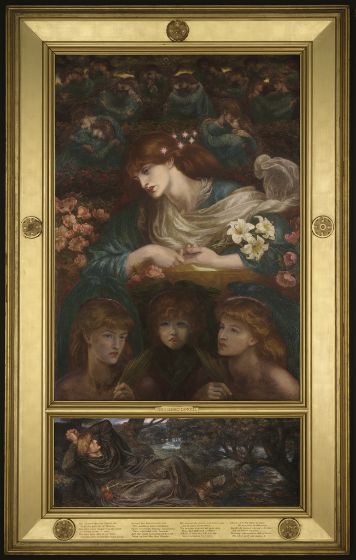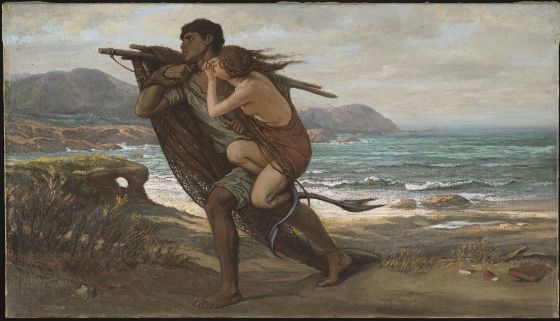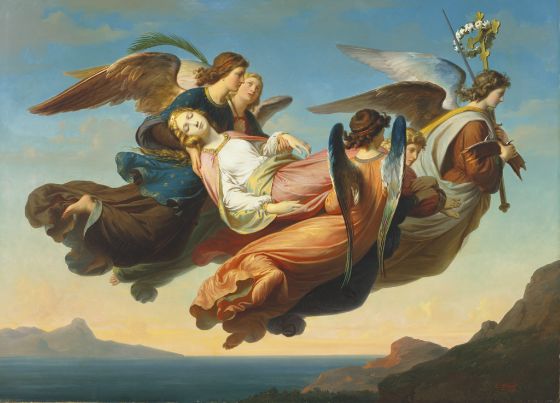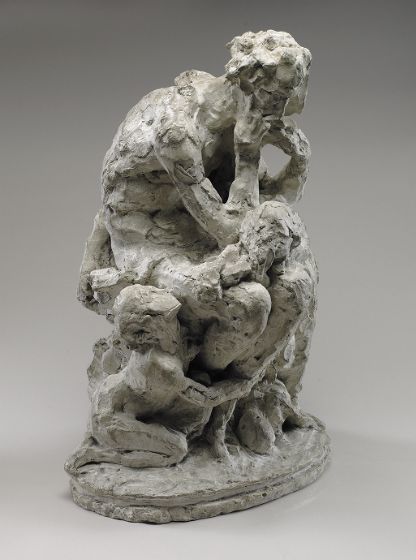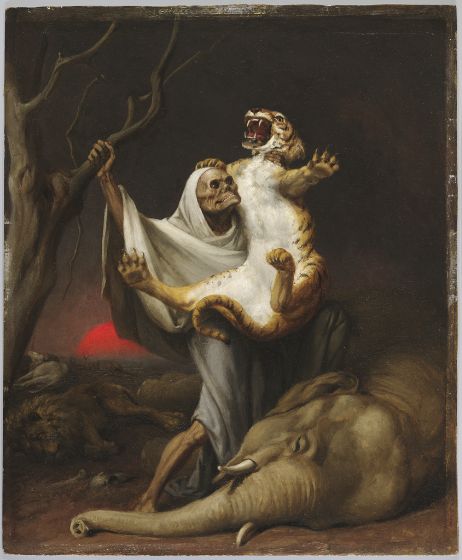As with writing a book, curating a gallery involves multiple drafts—the first might be sensible and logical, but the final draft, if successful, is nuanced, offers surprising turns, and plays with core themes. All of these can be said of the installation plan for the Pre-Raphaelite gallery in our new facility. Miriam Stewart, the Curator of the Collection in the Division of European and American Art, recently shared with us the process of discovery involved in developing this impressive space.
For those of you who aren’t familiar with the Pre-Raphaelites, a group of artists—including Dante Gabriel Rossetti, John Everett Millais, and William Holman Hunt—formed the Pre-Raphaelite Brotherhood in 1848. Unhappy with the sentimentalism found in contemporary painting, they looked to more elevated sources for the subjects of their painting—the Bible, Shakespeare, Tennyson. Their name implies a kinship with art of the 15th century, before the time of Raphael, whom they believed initiated mannered and academic painting. The works are often striking in their rich, brilliant color.
Stewart and her fellow curators had excellent material to begin with. The Harvard Art Museums hold one of the best Pre-Raphaelite collections in the country, thanks to Grenville Winthrop, one of the Fogg Museum’s most generous benefactors. His collection of late 19th-century British art includes works by Rossetti, Edward Burne-Jones, Ford Madox Brown, John Everett Millais, Simeon Solomon, Albert Moore, and George Frederick Watts.
With so many great works to choose from, and an intimate space to in which to present them, first Stewart had to plan the core works and pick key themes for the gallery. Five paintings in our collection by Rossetti feature a beautiful woman in a pensive pose; clearly one wouldn’t want to display them all and lose the opportunity for sharing a larger variety of works. But there are some that can’t be hidden away: A Sea Spell and The Blessed Damozel, for instance. There are stellar examples by Burne-Jones, as well, such as Danaë Watching the Building of the Brazen Tower and The Days of Creation. The paintings by William Holman Hunt make up another group essential to the collection. His majestic The Triumph of the Innocents is an outstanding example of his work.
In keeping with the vision of the new Harvard Art Museums as a site for creating greater dialogue among works of art, Stewart and her colleagues knew they didn’t want to present the collection in a vacuum. Once the core was complete, they began considering works from other cultures and eras that might resonate with the Pre-Raphaelites. Stewart thought about the Austrian Carl von Blaas, who also took inspiration from early Renaissance artists, and his The Miraculous Translation of the Body of Saint Catherine of Alexandria to Sinai (1860), as well as the American William Holbrook Beard’s Power of Death (c. 1889–90) and Elihu Vedder’s Fisherman and Mermaid (1888–89).
Because the gallery at this point was so rich with paintings, Stewart chose sculptural works to add texture and dimension to the installation. She chose the small plaster Ugolino and His Children (1860), by Jean-Baptiste Carpeaux, which takes as its subject the Italian nobleman whom Dante relegated to the lowest circle of Hell in his Inferno (the Pre-Raphaelites, especially Rossetti, were obsessed with Dante). She also selected the graceful Spirit of the Waters (1914), Daniel Chester French’s study for a memorial fountain.
A crucial part of the creative process is stepping away. After leaving the gallery plan alone for several weeks, Stewart returned to the gallery model and was surprised to discover a theme throughout the works. All of them portrayed literary, biblical, or mythological themes, but more than this, the entire gallery seemed to be about liminal space—with subjects treading the threshold between heaven and earth, night and day, waking and sleeping, and life and death.
This revelation brought new focus to the gallery and moved curators to bring in Gustave Moreau’s painting The Young Man and Death (1856–65). The work’s exploration of the boundary between life and death and the question of the afterlife aligned well with the subjects of other works in the gallery.
Stewart also noticed that Rossetti’s A Sea Spell, about a seductive siren, seemed a fitting complement to Vedder’s Fisherman and Mermaid, which may be drawn from fairy tales.
The plan is now complete, and what began as a display of the strongest works of the Pre-Raphaelites has become an exploration of late 19th-century concerns—of allegory and symbolism, of death and the afterlife, even of Darwinism (Burne-Jones’s Days of Creation touches on this). We hope that visitors to our new facility will be inspired to take this journey through the gallery and make discoveries of their own.

